Becca Boring: Truk Lagoon
Wreck diving is unparalleled in diversity; history, artifacts, decay, beautiful corals and abundant life. Truk Lagoon has got to be one of the most spectacular places in the world for it. Chuuk State, often known to divers as Truk, is part of the Federated States of Micronesia. Japan acquired Chuuk after WWI and established it as their major base of operations in the Pacific during WWII.
In February of 1944 the US carried out Operation Hailstone, a two-day strike aimed at neutralizing the Japanese threat at Chuuk, resulting in the loss of 250 Japanese aircraft and 45 ships. This unique aggregation of historically significant wrecks, coupled with the 84°F water and breathtaking scenery makes Truk Lagoon a one of a kind dive destination.
Outside of the wrecks life springs vivaciously from death. Many relics of war are hardly discernible, covered in thriving corals. Ship hulls look like sprawling reef scenes. Every square inch is alive and blossoming. Inside the wrecks is different. It is stark and uninviting. Diving there is both exhilarating and sobering. As you traverse through holes and down stairwells it is difficult to get a big picture. You get eery glimpses, snippets of what was. That is what I wanted to capture.
Becca Boring has been a diver for more years than she has not. She currently lives and dives in Monterey, California and works for Backscatter Underwater Video & Photo.
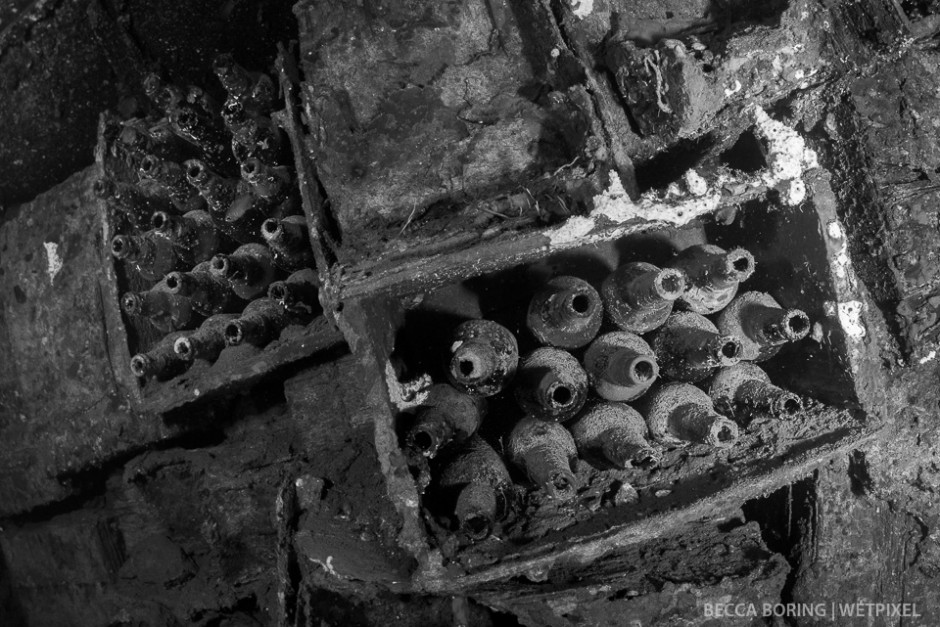
Sake bottles on Rio De Janeiro Maru, a passenger/cargo vessel turned Japanese submarine tender in 1940, and then in 1943 reclassified as a transport ship.
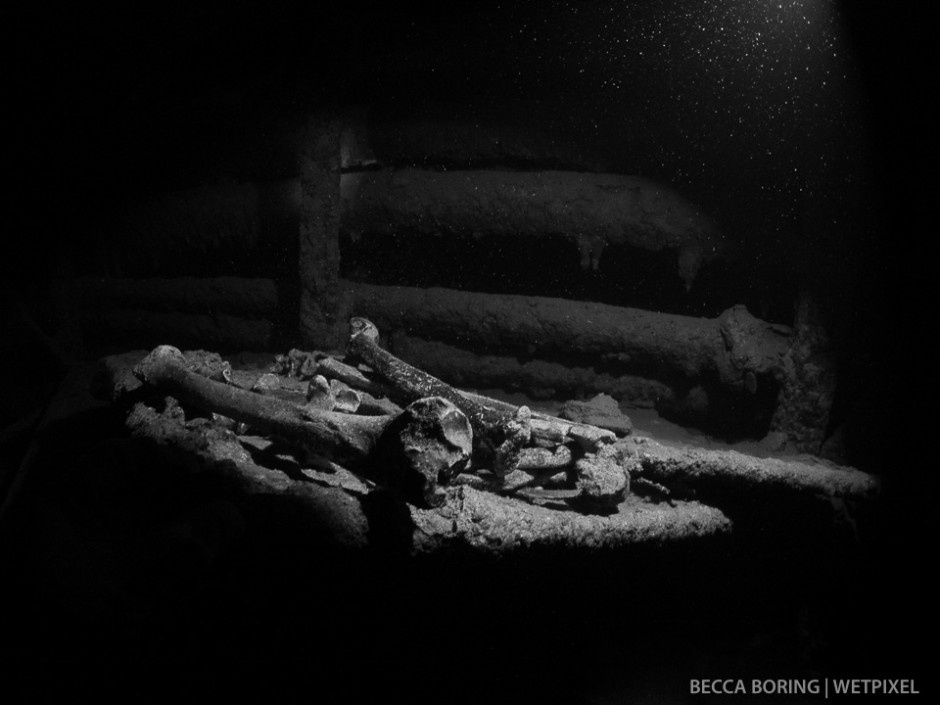
The Yamagiri Maru was another civilian ship turned military transport. The remains are a stark reminder of the gravity of war.
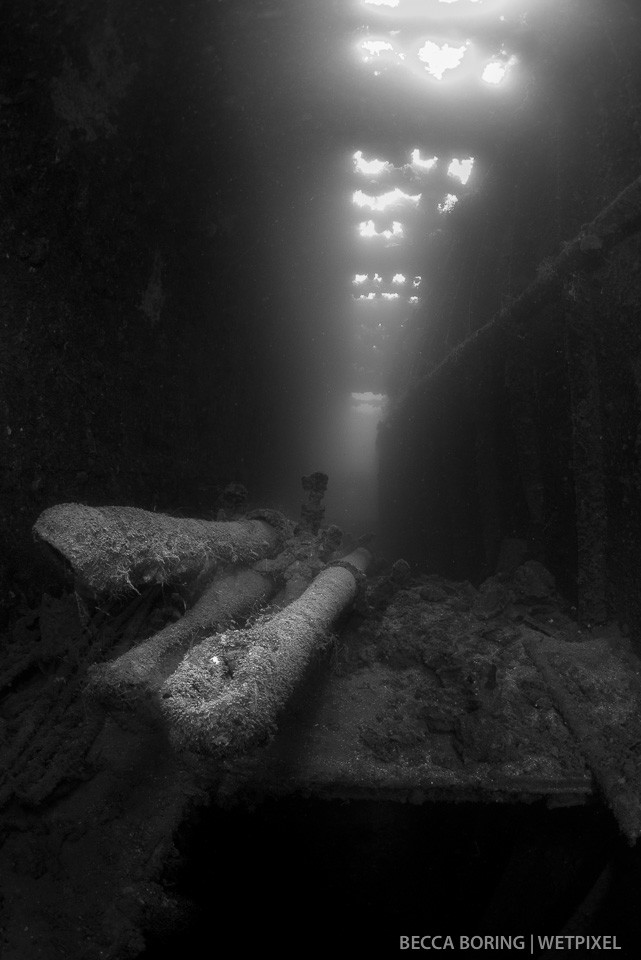
Periscopes on the Heian Maru, a Japanese submarine tender. The Heian is the largest wreck in Truk Lagoon. Her cargo hold is also final resting place to a collection of Japanese long lance torpedoes.
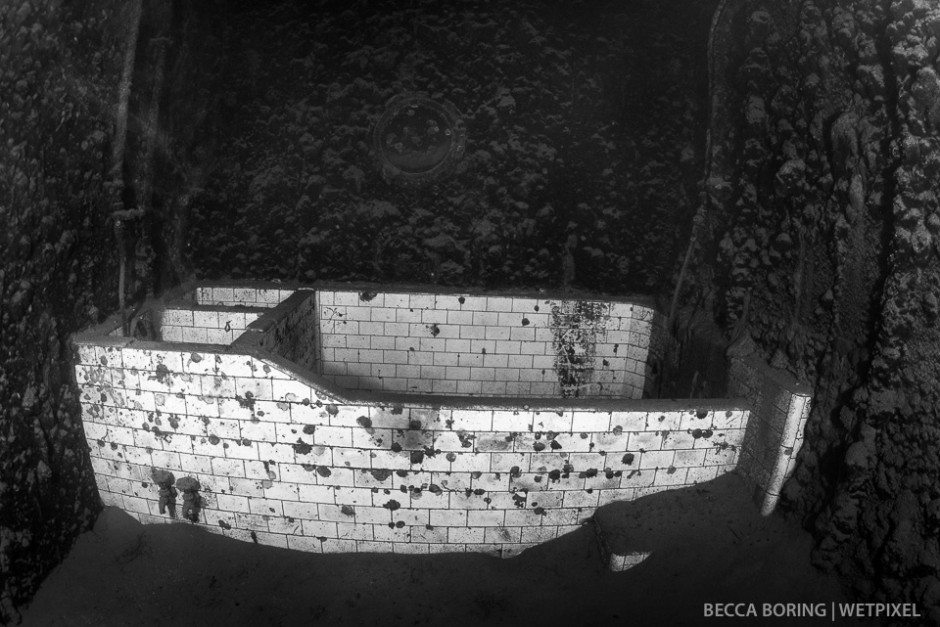
Originally a civilian tanker, the Shinkoku Maru served the Japanese Navy as a fleet oiler. There is easy access to officers quarters where there was no shortage of bathtubs.
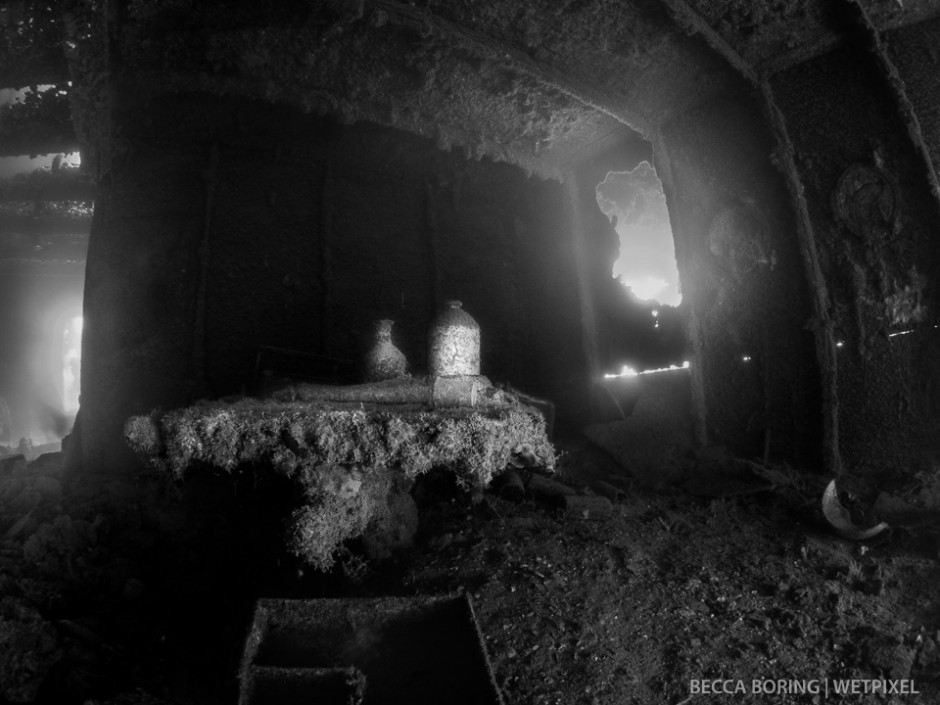
The operating room on the Shinkoku Maru - where bodies and wounds were once mended, now dark.
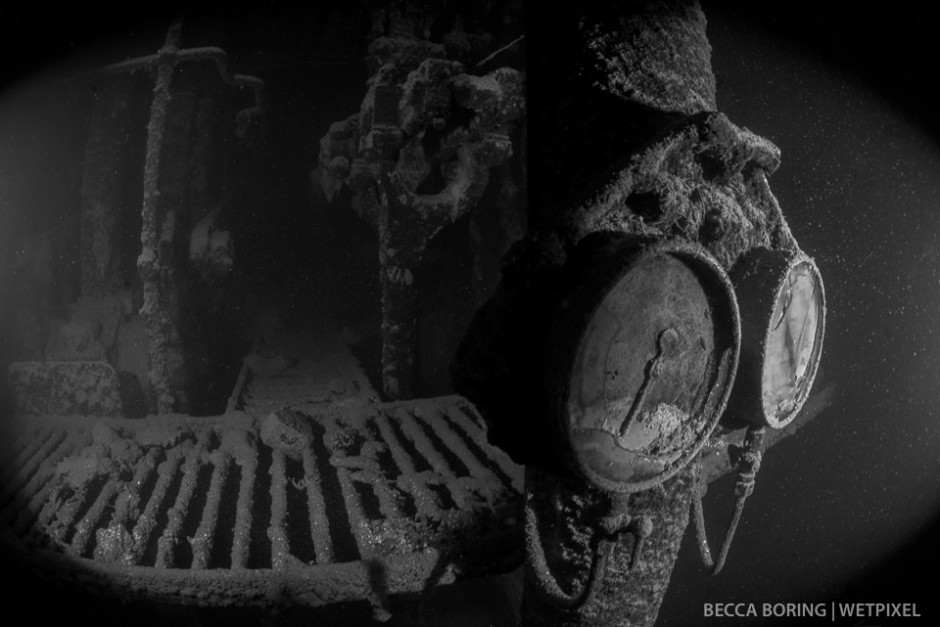
Gauges on the Unkai Maru - a Japanese cargo ship built in the early 1900s. Most of the ships lost during Operation Hailstone were not bonafide military vessels, rather merchant ships aiding in the Japanese war effort.
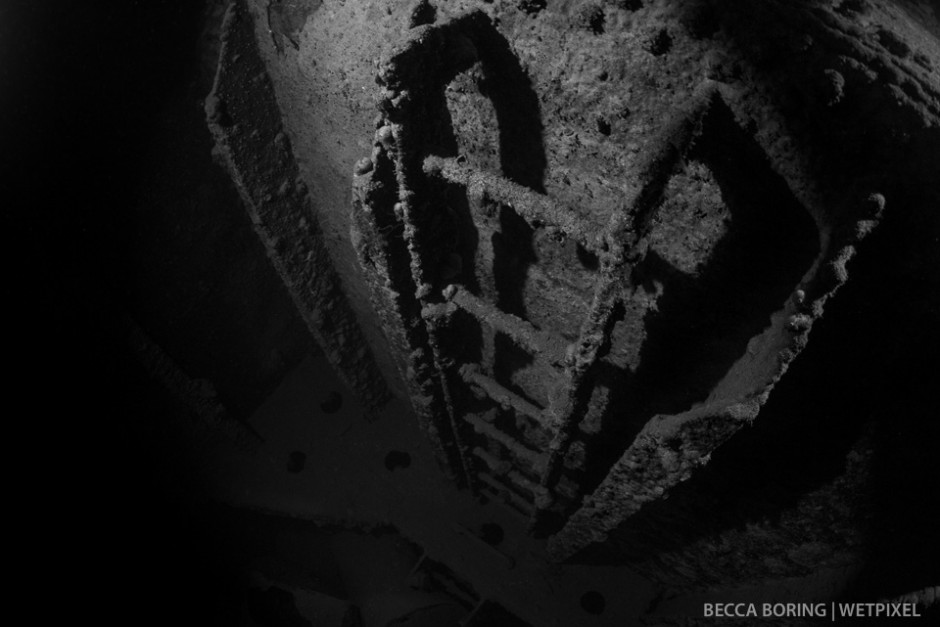
Originally a passenger/cargo carrier, the Fujikawa Maru was repurposed by the Japanese Navy as an aircraft ferry during WWII.
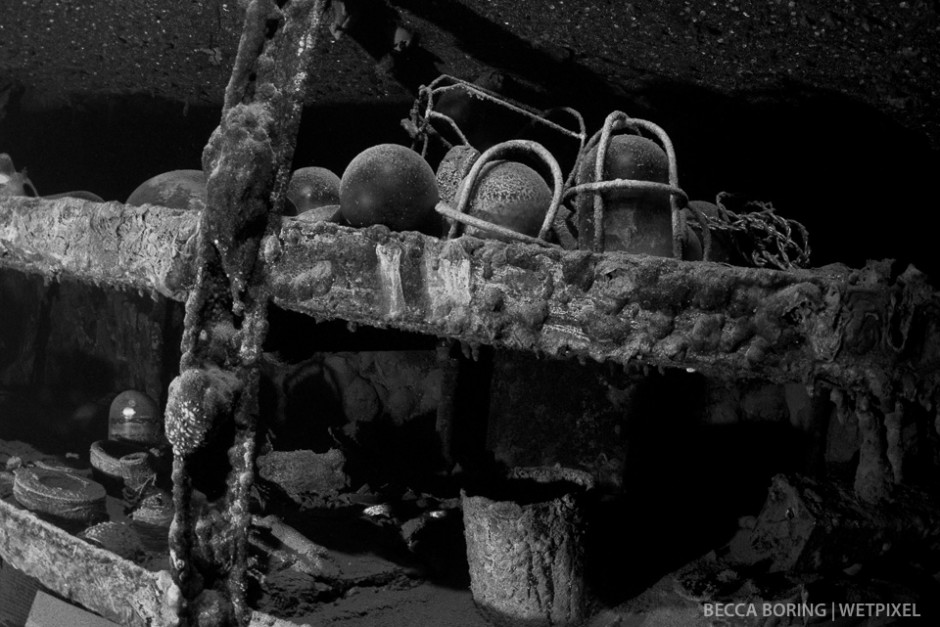
Cage lights stored in the machine shop on the Fujikawa Maru.